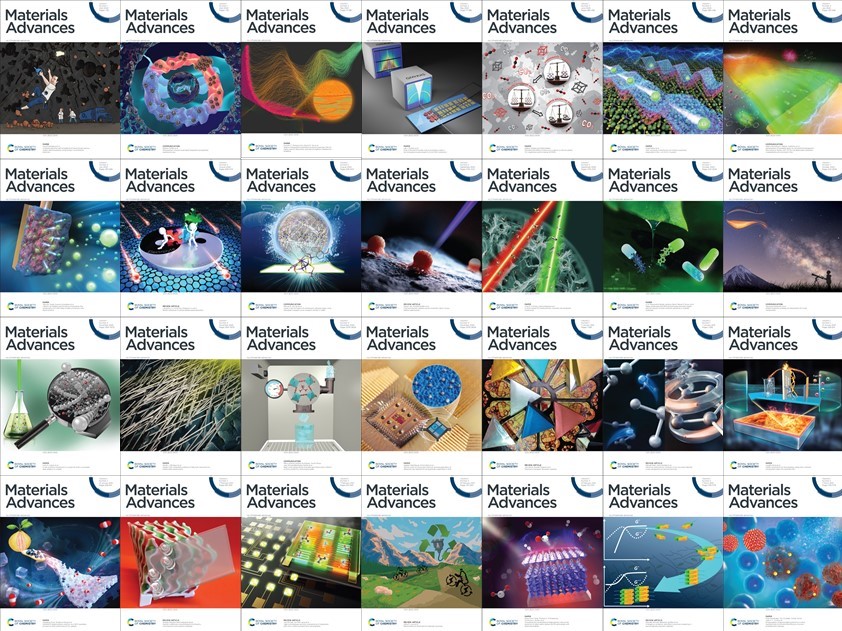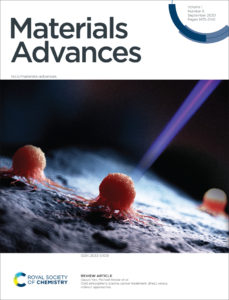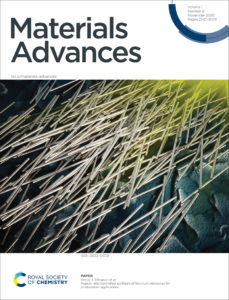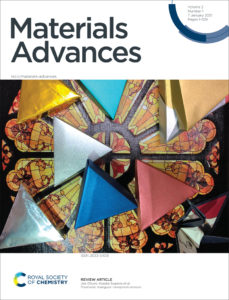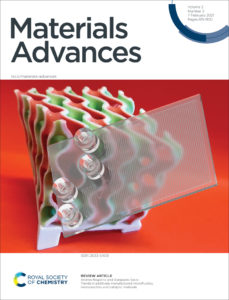We are delighted to announce that Dr Gemma-Louise Davies (University College London, UK), Professor Ji Jian (Zhejiang University, China), Professor Shaoqin Liu (Harbin Institute of Technology, China) and Professor Jessica Winter (Ohio State University, USA) join the Journal of Materials Chemistry B team as Associate Editors.
Gemma, Ji, Shaoqin and Jessica join Xiaogang Qu, Dal-Hee Min, Marc in het Panhuis, Guoping Chen and Jiang Chang as Associate Editors handling the peer review of submissions to the journal.
Gemma-Louise Davies graduated from Trinity College Dublin (Ireland) with a Degree in Natural Sciences (Mod. Chemistry) and remained there to undertake a PhD in Inorganic and Materials Chemistry (awarded in 2011). Following a brief industry-supported Postdoctoral Fellowship in Trinity  College Dublin, Gemma-Louise moved to the University of Oxford as a Postdoctoral Research Associate before she was awarded a Global Research Fellowship at the University of Warwick in 2013. She joined the Department of Chemistry at University College London as Lecturer in Materials Chemistry and Director of the MSc in Materials for Energy and the Environment in July 2017. Gemma-Louise’s interdisciplinary research focusses on the design and development of nanostructured materials for medical imaging, diagnostic and healthcare applications, industrial application and also investigates the role and fate of nanomaterials in the environment.
College Dublin, Gemma-Louise moved to the University of Oxford as a Postdoctoral Research Associate before she was awarded a Global Research Fellowship at the University of Warwick in 2013. She joined the Department of Chemistry at University College London as Lecturer in Materials Chemistry and Director of the MSc in Materials for Energy and the Environment in July 2017. Gemma-Louise’s interdisciplinary research focusses on the design and development of nanostructured materials for medical imaging, diagnostic and healthcare applications, industrial application and also investigates the role and fate of nanomaterials in the environment.
Read Gemma-Louise’s recent paper on Heparin-stabilised Iron Oxide for MR Applications: A Relaxometric Study
Submit to Gemma-Louise’s office
 Ji Jian is a professor at Department of Polymer Science and Engineering in Zhejiang University. He received his PhD in the chemistry and physics of polymers from Zhejiang University in 1991. His research focuses on interfacial phenomena for biomedical implant, tissue engineering and nanomedicine. He has published 320 publications and 36 patents. He received several awards including the Distinguished Young Scholars Award of the National Science Foundation of China (2010), Chang Jiang Scholars by Ministry of Education (2015) and Fellow of The Royal Society of Chemistry (2016). Since 2017,he has been the director of Institute of Biomedical Macromolecule in Zhejiang University.
Ji Jian is a professor at Department of Polymer Science and Engineering in Zhejiang University. He received his PhD in the chemistry and physics of polymers from Zhejiang University in 1991. His research focuses on interfacial phenomena for biomedical implant, tissue engineering and nanomedicine. He has published 320 publications and 36 patents. He received several awards including the Distinguished Young Scholars Award of the National Science Foundation of China (2010), Chang Jiang Scholars by Ministry of Education (2015) and Fellow of The Royal Society of Chemistry (2016). Since 2017,he has been the director of Institute of Biomedical Macromolecule in Zhejiang University.
Read Ji’s recent paper on Bacterial infection microenvironment-responsive enzymatically degradable multilayer films for multifunctional antibacterial properties
Submit to Ji’s office
Shaoqin Liu received her Bachelor degree and PhD degree from Wuhan University of Hydraulic and Electric Engineering in 1994 and from Changchun Institute of Applied Chemistry (Chinese  Academy of Science) in 1999, respectively. She started her chemistry research career under Professor Shaojun Dong group at Changchun Institute of Applied Chemistry to develop polyoxometalates-based thin film. After her PhD degree, she moved to Max-Planck-Institute of Colloids and Interface as Humboldt Fellow. She developed polyoxometalates-based functional materials. In 2004, she joined National Research Council of Canada as NESRC fellow to study direct methanol fuel cells. In 2007, she started her academic career as a Full Professor in Harbin Institute of Technology. Her current research interests include preparation of nanostructured materials and their applications in energy, biosensing and cancer therapy.
Academy of Science) in 1999, respectively. She started her chemistry research career under Professor Shaojun Dong group at Changchun Institute of Applied Chemistry to develop polyoxometalates-based thin film. After her PhD degree, she moved to Max-Planck-Institute of Colloids and Interface as Humboldt Fellow. She developed polyoxometalates-based functional materials. In 2004, she joined National Research Council of Canada as NESRC fellow to study direct methanol fuel cells. In 2007, she started her academic career as a Full Professor in Harbin Institute of Technology. Her current research interests include preparation of nanostructured materials and their applications in energy, biosensing and cancer therapy.
Read Shaoqin’s recent paper on MoS2-Based multipurpose theranostic nanoplatform: Realizing dual-imaging-guided combination phototherapy to eliminate solid tumor via a liquefaction necrosis process
Submit to Shaoqin’s office
 Jessica Winter is a Professor in the William G. Lowrie Department of Chemical and Biomolecular Engineering and the Department of Biomedical Engineering, Associate Director of the MRSEC Center for Emergent Materials at the Ohio State University, and Past Chair of the Nanoscale Science and Engineering Forum of the American Institute of Chemical Engineers. She received her PhD in Chemical Engineering from the University of Texas at Austin in 2004, and completed a postdoctoral fellowship at the Center for Innovative Visual Rehabilitation at the Boston VA Hospital in 2006. Her research interests include nanomaterials for cancer imaging, diagnostics, drug delivery; and cell migration in the brain tumor microenvironment. She is a co-founder and Chief Scientific Officer of Core Quantum Technologies, a company commercializing nanoparticle reagents for leukemia diagnostics. She has received the American Chemical Society Rising Star Award and the Golden Mouse Trap Engineering Rising Star Award; she was named to Top 25 STEM professors in Ohio; and is a fellow of the AAAS, AIMBE, and senior member of the IEEE and AIChE.
Jessica Winter is a Professor in the William G. Lowrie Department of Chemical and Biomolecular Engineering and the Department of Biomedical Engineering, Associate Director of the MRSEC Center for Emergent Materials at the Ohio State University, and Past Chair of the Nanoscale Science and Engineering Forum of the American Institute of Chemical Engineers. She received her PhD in Chemical Engineering from the University of Texas at Austin in 2004, and completed a postdoctoral fellowship at the Center for Innovative Visual Rehabilitation at the Boston VA Hospital in 2006. Her research interests include nanomaterials for cancer imaging, diagnostics, drug delivery; and cell migration in the brain tumor microenvironment. She is a co-founder and Chief Scientific Officer of Core Quantum Technologies, a company commercializing nanoparticle reagents for leukemia diagnostics. She has received the American Chemical Society Rising Star Award and the Golden Mouse Trap Engineering Rising Star Award; she was named to Top 25 STEM professors in Ohio; and is a fellow of the AAAS, AIMBE, and senior member of the IEEE and AIChE.
Read Jessica’s recent paper on Hydrogels that allow and facilitate bone repair, remodeling, and regeneration
Submit to Jessica’s office
Journal of Materials Chemistry B publishes novel work on high impact applications, properties and synthesis of exciting new materials for biology and medicine. Submissions to the journal should contain chemistry in a materials context. Our latest Impact Factor is 4.776*.
As a society journal, we are committed to supporting the materials community – benefitting you and future generations of materials scientists. Keep up-to-date with all articles published in Journal of Materials Chemistry B with our monthly table-of-content e-alerts and read our latest papers on our website.
*2017 Journal Citation Reports®, Clarivate Analytics June 2018
 Single-atom catalysts (SACs) with isolated metal atoms dispersed on solid supports have emerged as a new frontier in catalysis science owing to their great potential to bridge the gap between heterogeneous and homogeneous catalysis. The active centers of this new class of materials possess unique electronic structure and unsaturated coordination environments, which have been proven to improve catalytic activity in a variety of reactions. Moreover, the homogeneity in the active sites and geometric structure of SACs, which show similarities to their homogeneous catalyst analogs, afford them a great potential to enhance selectivity because of similar spatial and electronic interactions to substrates.
Single-atom catalysts (SACs) with isolated metal atoms dispersed on solid supports have emerged as a new frontier in catalysis science owing to their great potential to bridge the gap between heterogeneous and homogeneous catalysis. The active centers of this new class of materials possess unique electronic structure and unsaturated coordination environments, which have been proven to improve catalytic activity in a variety of reactions. Moreover, the homogeneity in the active sites and geometric structure of SACs, which show similarities to their homogeneous catalyst analogs, afford them a great potential to enhance selectivity because of similar spatial and electronic interactions to substrates.










